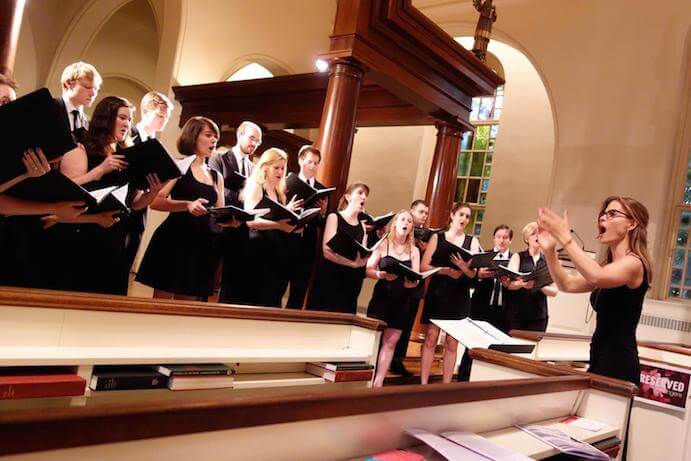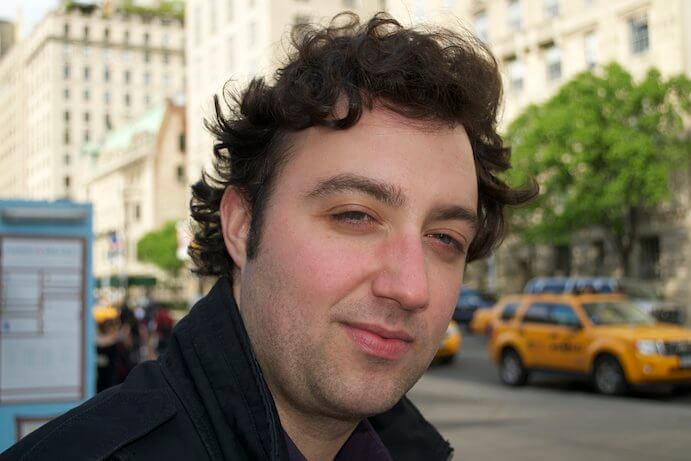Since the demise of the Brooklyn Philharmonic in 2012, the borough has been without an orchestral voice to lead it further into the 21st century. But while the role of Brooklyn’s pre-eminent orchestral institution has been vacant for the last three years, it appears as if the String Orchestra of Brooklyn is quickly appointing itself as a successor. The orchestra’s concert on Thursday, June 25, 2015 at Roulette was a testament to its rising power in the new music scene and cultural mind of Brooklyn.
Morton Feldman’s classic Rothko Chapel kicked off the evening. Performed by GHOSTLIGHT Chorus—a frequent collaborator of the String Orchestra of Brooklyn—along with several soloists, Feldman’s piece is an autobiographical reflection on his life that ends with the memory of a piece he wrote at the age of fourteen. The subdued nature of Rothko Chapel proclaims itself at the start: a timid viola line emerges from a backdrop of ethereal voices, so soft that the melody often gets lost in the texture. Violist Emily Bookwalter’s masterful interpretation did well to contain these near silent portions of the piece. But Bookwalter was able to allow her instrument to truly sing in the few moments of the piece where the viola swells from a whisper to a murmur. Bookwalter was joined by soprano Justine Aronson, whose delicate yet precise vocal line intertwined with the viola to create the effect of two separate and distinct voices emerging from the timbre of each other. This complementary relationship between voice and viola was also mirrored in the laudable playing of Vasudevan Panicker on celeste and Chrisopher Graham on percussion. The pair were extensions of each other throughout the piece, from hiding within the muted vocal texture to momentarily emerging in the foreground of Feldman’s sonic self portrait.

GHOSTLIGHT Chorus
Following the Feldman was the world premiere of Scott Wollschleger’s standout work Meditation on Dust. The piece, as Wollschleger writes in the program notes, asks the question, “what would happen if a Strauss tone poem was left out in the desert for 1,000 years?” Upon reading the program notes, the answer is nearly impossible to comprehend. However, Wollschleger’s intention becomes increasingly clear as the piece unfolds. Performed by formidable pianist Karl Larson, who was joined by the String Orchestra of Brooklyn, Meditation on Dust conveys the decay of Strauss over a millennium through the exploitation of the harmonic series. This is the obsession of the piece, and Larson frequently plays quick variations on the harmonic series over multiple octaves. Wollschleger’s skeleton of tonality is all that is left after almost 400,000 sunrises over Also sprach Zarathustra. Some of the most stunning moments of Meditation on Dust were achieved through the orchestration. Perhaps most notable was when the overtone-infused notes produced from extended techniques in the strings emerged seamlessly from Larson’s playing in the uppermost reaches of the piano. Meditation on Dust easily stole the show that evening. I truly hope Wollschleger’s piece is performed again, as it was one of the most magical premieres I have experienced in a long time.

Scott Wollschleger– Photo by Emily Bookwalter
For the final piece of the evening, Krzysztof Penderecki’s Dimensions of Time and Silence, Iktus Percussion joined the String Orchestra of Brooklyn on stage while GHOSTLIGHT Chorus formed an antiphonal male-female chorus in the balcony. Typical of Penderecki’s early work, the piece employs masses of sound moving in space, sometimes drifting past each other and at other times colliding head on. The Penderecki served as a louder contrast to the other two pieces on the program, reaching a penultimate moment filled with blaring percussion, extended techniques in the strings, and a belting chorus. The cacophony gives way to a moment of stillness before the chorus reenters for the final seconds, moving gradually from atonal whistling to soft hums and eventually silence.
Though founded only in 2007, the String Orchestra of Brooklyn is quickly solidifying its role as a major orchestral figure in the borough. It will be exciting to see where the orchestra goes in the next two years, let alone the next ten. Incredible displays of artistry, superb programming, and a commitment to commissioning new works make the String Orchestra of Brooklyn a force to be reckoned with. Resistance is futile.





















